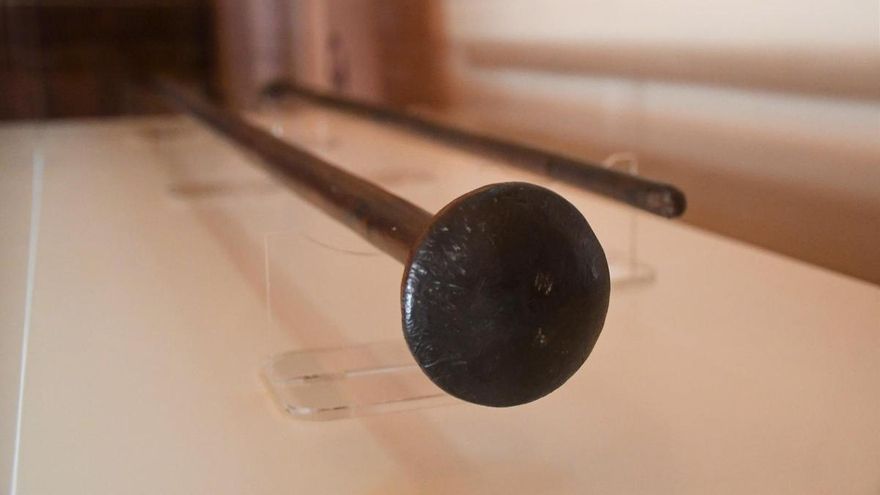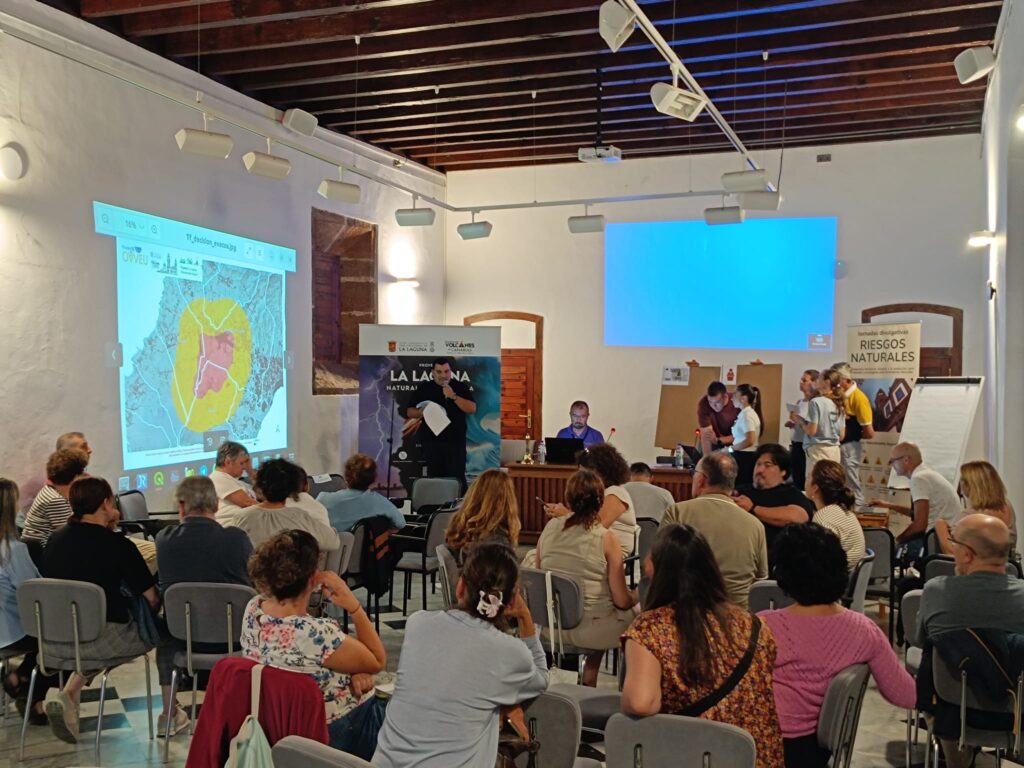
177 years ago naturalists Sabin Berthelotfrom France, and Philip Barker Webbof English origin, decided to donate to the Municipality of La Orotava two Guanche añepas who related to the Mencey of Taoro. They were extracted from the so-called Cueva del Príncipe, in the municipality of The Realejos; They were later donated to the Villero Consistory, and until June 30 they can be seen in a small exhibition mounted on the main staircase of the La Orotava Town Hall, the entity that has guarded them since 1845.
The area of Culture of the Villa has been in charge of assembling this exhibition dedicated to these two archaeological pieces of great value: two aboriginal wooden canes called añepas and related to the political power of the aborigines of Tenerife. This sample is made up of a large panel detailing data relating to its discovery in The Realejos, to the different typological interpretations, the specific conditions of the donation or the interest of the scientific cabinets of the 19th century to acquire them. The set is presided over by an urn, specially conditioned, to contain these two pieces of great historical and symbolic value.
The Mayor of Orota, Francisco Linares (CC), stresses that the objective of this exhibition is “to value the archaeological heritage of the municipality and, at the same time, raise awareness of the value of the archaeological heritage as a primary mechanism for learning about the ancient cultures of the Archipelago.” This initiative is developed to commemorate the European Year of Cultural Heritage and, in addition, constitutes, according to the local government, “another of the actions in favor of the declaration of La Orotava as a Cultural Landscape within the framework of its race to become a World Heritage from Unesco.
The historian Zebenzui Lopez underlines the importance of this exhibition that “brings local, insular and, obviously, Canary Islands history closer to society.” López explained that both pieces were even transferred to Paris before being kept in La Orotava. They remained in the French capital for years, “but the naturalists themselves understood that their place was their area of origin due to its symbolic value.” For this reason, the donation was made to the Villero City Council. Subsequently, the scientific cabinets launched in Santa Cruz of Tenerife For the creation of the first archaeological museums on the island, they also tried to acquire both pieces at various times, «but those responsible at the La Orotava City Council did not agree out of respect for history; to the value they have in the area for belonging to the sovereigns of the menceyato of Taoro, and to the criteria of the naturalists themselves who found them », he details.
López also valued “the management of the people who led the Municipality of La Orotava during the last 177 years, which has allowed us to preserve today these extraordinary pieces that have been guarded with so much care in this institution». The añepas were discovered, according to Berthelot, in a cave room in a ravine on the slope of Tigaiga, very spacious and with twelve or fifteen seats roughly carved from a piece of stone. In addition, various documents from the entire process are preserved: donation letters, plenary minutes or signs of interest from other researchers in these pieces.















